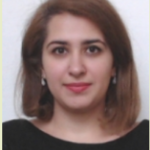Link to Pubmed [PMID] – 30209260
Sci Rep 2018 Sep;8(1):13673
Despite efforts during the past decades, loop modeling remains a difficult part of protein structure modeling. Several approaches have been developed in the framework of crystal structures. However, for homology models, the modeling of loops is still far from being solved. We propose DaReUS-Loop, a data-based approach that identifies loop candidates mining the complete set of experimental structures available in the Protein Data Bank. Candidate filtering relies on local conformation profile-profile comparison, together with physico-chemical scoring. Applied to three different template-based test sets, DaReUS-Loop shows significant increase in the number of high-accuracy loops, and significant enhancement for modeling long loops. A special advantage is that our method proposes a prediction confidence score that correlates well with the expected accuracy of the loops. Strikingly, over 50% of successful loop models are derived from unrelated proteins, indicating that fragments under similar constraints tend to adopt similar structure, beyond mere homology.

